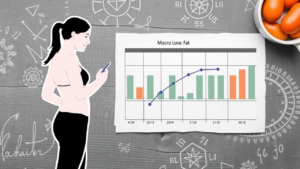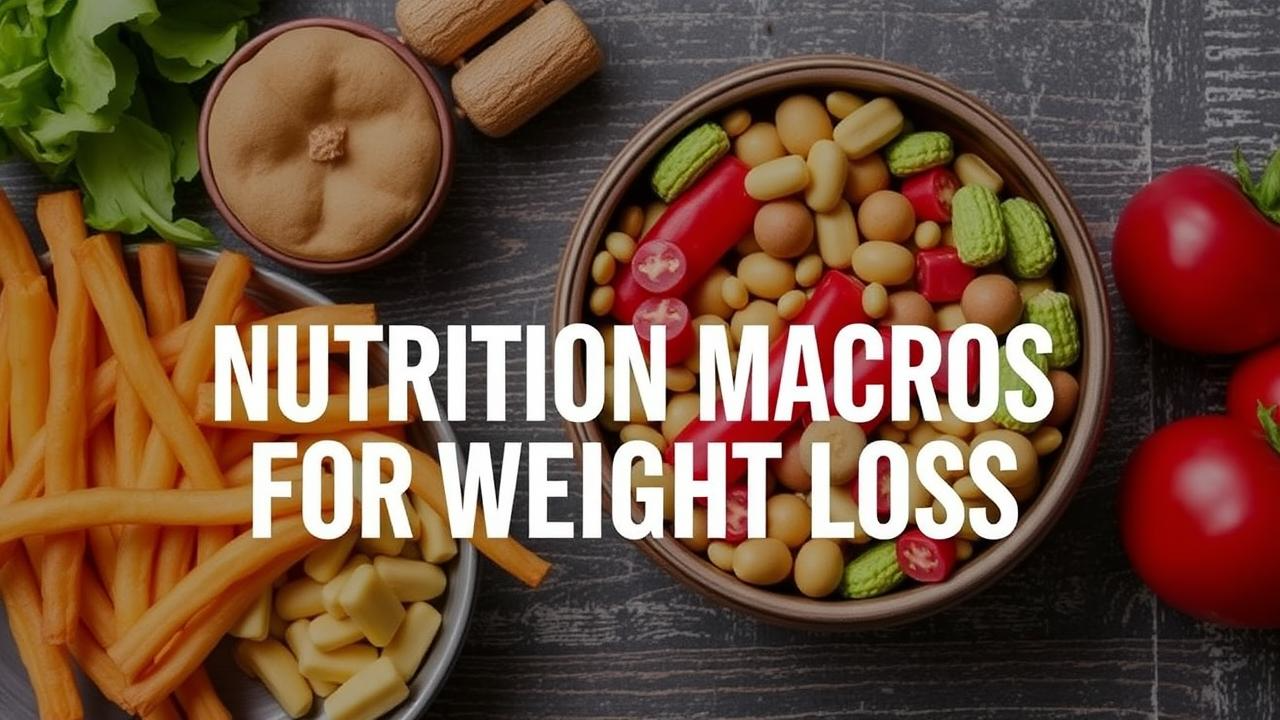Understanding Nutrition Macros for Fat Loss
Cracking the Macro Code: I want to share with you a big idea for my health journey – understanding nutrition macros for weight loss. You might have wondered what macros are, why they are important, and how to utilize macros as a health tool, like I did a few years ago. But, don’t worry – in this article, I will break it down in an understandable, actionable way.
So, What Are the Macros?
Macros, or macronutrients, refer to three groups of nutrients found in most food that are always competing for your body’s energy: carbohydrates, protein, and fats. They do different things – analysis of these components of your food will allow you to provide better food choices for your body.
- Carbohydrates are the primary form of energy for your body. There are two forms of carbs: simple carbs (sugars) and complex carbs (whole grains, fruits, and vegetables). Complex carbs are usually better for sustaining energy and helping with weight status/management because they take longer to digest.
- Protein is necessary for building and repairing your body’s tissues. This is especially important if you are regularly exercising, as it aids with muscle recovery and rebuilding. On top of this, protein is typically more filling than carbohydrates or fats, which may help with portion control.
- Fats are another important energy source, as they help with hormone production. Not all fats are created equal, however! Our bodies do need healthy fats, like avocados, nuts, and olive oil for heart and overall health. Processed fats and trans fats should be limited.

The Importance of Macros for Weight Loss
Now, you’re probably saying, “Fine, I understand what macros are, but how does that help me lose weight?” well, it isn’t just a calorie-cutting game- it’s knowing that you can cut calories, yet still fuel your body properly, and balance your nutrient ratios to support your goals. By focusing on your macros, it isn’t just being less, it’s eating better.
When you balance your intake of carbohydrates, protein, and fats you can keep energy levels stable, lower cravings, and promote muscle growth, which all aid in burning more calories at rest.
Analyzing Your Macros when trying to lose fat
Okay, let’s talk about the practical element of tracking your macros (i.e. carbs, fat, protein). Macro tracking may feel overwhelming at first; it doesn’t have to be. Here is a very simple guide from nutrition macros for weight loss blog to tracking your macros for fat loss:

1.Calculate Your Daily Calorie Needs:
Before you can track macros, you want to know how many calories you should eat per day to lose weight. Weight loss at a safe and sustainable rate is losing approximately 1-2 pounds per week or a daily calorie deficit of 500-1,000 calories. You can use an online calorie calculator to estimate your maintenance calories, then subtract the 500-1,000 calories from your maintenance calories to calculate the total calories you should be eating each day.
2.Determining Your Macro Ratios:
The right mix of carbohydrates, proteins, and fats depends on your goals, activity level, and preferences. Here is a guideline for weight loss.
- Carbohydrates: 40-50% of total calories
- Proteins: 30-40% of total calories
- Fats: 20-30% of total calories
If 2,000 calories is your daily goal, that translates to:
- 200-250g carbohydrates
- 150-200g proteins
- 40-60g fats
3.Begin Tracking:
There are tons of apps and tools that can help you track your macros, such as MyFitnessPal, Lose It!, or just a plain spreadsheet. Just find a method that works for you and you can stick with.
4.Pay Attention to Whole Foods:
It can be so easy to get fixated on hitting your macros perfectly! But don’t forget: food quality also matters. Whole, unprocessed foods, like lean meats, fish, eggs, whole grains, fruits, vegetables, and healthy fats are better for you than processed junk food. Not to mention, they are more satiating.
Typical Mistakes You Should Avoid
- Focusing Too Much on Exact Numbers– It is common to be obsessive about counting macros and attempting to hit your goals precisely on a daily basis, but moving forward and focusing more on consistency matters more than the idea of perfection when it comes to food. If you are periodically a few grams more or less than the goal a reasonable amount of the time, that is okay! As you will see in the next section about meals, what matters is that you are making progressive steps toward living the lifestyle you’ve chosen to create.
- Eliminating Foods Completely– Some individuals find success on different diets like keto or low-carb eating lifestyles, but banning foods completely usually is not feasible, reasonable, and is also not very healthy for people either. Eating foods in moderation is important to help you make smart choices about foods – so strategies are better than outright restrictions. It’s about finding balance and assessing decision-making by tracking just who you are living.
- Disregarding Cues of Hunger– Just because you are tracking macros does not mean you should disregard your body’s natural hunger and fullness cues. Eat when you’re hungry; stop when you’re full; and don’t feel you have to finish your whole plate when you are satisfied.
Putting It All into Practice
A Day in the Life: Let’s put this all to practice with an example of what a macro-friendly day of eating could look like:
- Breakfast: scrambled eggs with spinach and avocado (320 calories; 20g protein; 20g fat; 10g carbs)
- Snack: a small apple with almond butter (150 calories; 4g protein; 8g fat; 15g carbs)
- Lunch: grilled chicken breast with quinoa and steamed vegetables (450 calories; 50g protein; 10g fat; 40g carbs)
- Snack: Greek yogurt with berries (150 calories; 15g protein; 0g fat; 20g carbs)
- Dinner: baked salmon with sweet potato and green beans (400 calories; 40g protein; 15g fat; 30g carbs)
Totals: 1,520 calories; 129g protein; 63g fat; 115g carbs.
In Conclusion: This is a Process Not An Endpoint
When it comes down to it, losing weight and becoming healthier is about more than a number on a scale, or on a nutrition label. It is about creating an eating calling that works for the long run, that fits your body and makes you feel good.
Tracking your macros is a great tool that allows you to see your eating behavior and make purposeful decisions about food. Tracking macros is not meant to be a strict set of rules to follow, it is a reference point for you to work towards achieving a healthy balance and healthy eating in a sustainable way.
While looking to find that sense of equilibrium and health, don’t be afraid to experiment, try new things, and find your own sense of normal. On this journey, the goal is progress rather than perfection. And don’t forget to enjoy the process with nutrition macros for weight loss!
Read more articles: Healthy Nutrition Weight Loss


